The Cosmic Mead
and the Death of Baldur
by Dr. Christopher Johnsen
© 2014
[HOME]
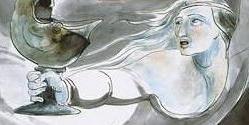
"A Drink for Balder Bold" by William Blake (1790)
The death of Baldur is one of the greatest stories in the Norse mythology. The myth is told in Baldrs Draumar and Vegtamskvida (Baldur´s Dreams or The Song of Vegtam). There are extra lines contained in Vegtamskvida which make a more complete poem. The Prose Edda also contains information which I will examine first.
Here is the relevant part about Baldur’s death in Gylfaginning 49:
|
Þá mælti Gangleri:
"Hafa nökkur meiri tíðendi orðit með ásunum? Allmikit þrekvirki vann
Þórr í þessi ferð." |
“XLIX. Then spake Gangleri: "Have any more matters of note befallen among the Æsir? A very great deed of valor did Thor achieve on that journey." Hárr made answer: "Now shall be told of those tidings which seemed of more consequence to the Æsir. The beginning of the story is this, that Baldr the Good dreamed great and perilous dreams touching his life. When he told these dreams to the Æsir, then they took counsel together: and this was their decision: to ask safety for Baldr from all kinds of dangers. And Frigg took oaths to this purport, that fire and water should spare Baldr, likewise iron and metal of all kinds, stones, earth, trees, sicknesses, beasts, birds, venom, serpents. And when that was done and made known, then it was a diversion of Baldr's and the Æsir, that he should stand up in the Thing, and all the others should some shoot at him, some hew at him, some beat him with stones; but whatsoever was done hurt him not at all, and that seemed to them all a very worshipful thing. |
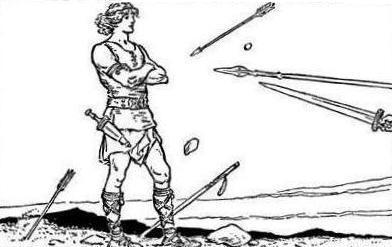 |
|
|
En er þetta sá Loki
Laufeyjarson, þá líkaði honum illa, er Baldr sakaði ekki. Hann gekk til
Fensalar til Friggjar ok brá sér í konu líki. Þá spyrr Frigg, ef sú kona
vissi, hvat æsir höfðust at á þinginu. Hon sagði, at allir skutu at
Baldri ok þat, at hann sakaði ekki. |
"But when Loki Laufeyarson saw this, it pleased him ill that
Baldr took no hurt. He went to Fensalir to Frigg, and made himself into
the likeness of a woman. Then Frigg asked if that woman knew what the
Æsir did at the Thing. She said that all were shooting at Baldr, and
moreover, that he took no hurt. Then said Frigg: 'Neither weapons nor
trees may hurt Baldr: I have taken oaths of them all.' Then the woman
asked: 'Have all things taken oaths to spare Baldr?' and Frigg answered:
'There grows a tree-sprout alone westward of Valhall: it is called
Mistletoe; I thought it too young to ask the oath of.' Then straightway
the woman turned away; but Loki took Mistletoe and pulled it up and went
to the Thing.
"Hödr stood outside the ring of men, because he was blind. Then
spake Loki to him: 'Why dost thou not shoot at Baldr?' He answered:
'Because I see not where Baldr is; and for this also, that I am
weaponless.' Then said Loki: 'Do thou also after the manner of other
men, and show Baldr honor as the other men do. I will direct thee where
he stands; shoot at him with this wand.' Hödr took Mistletoe and shot at
Baldr, being guided by Loki: the shaft flew through Baldr, and he fell
dead to the earth; and that was the greatest mischance that has ever
befallen among gods and men.
|
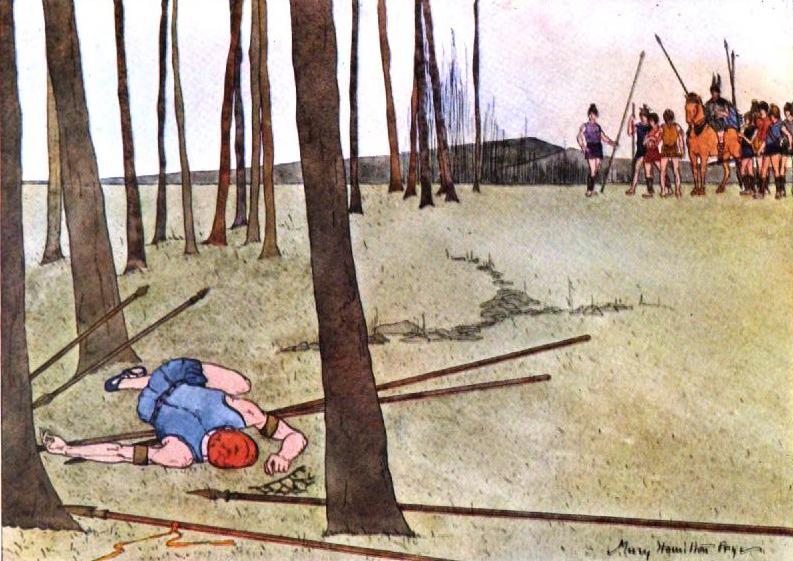 |
|
|
Þá er Baldr var fallinn, þá féllust öllum ásum orðtök ok svá hendr at taka til hans, ok sá hverr til annars, ok váru allir með einum hug til þess, er unnit hafði verkit, en engi mátti hefna. Þar var svá mikill griðastaðr. En þá er æsirnir freistuðu at mæla, þá var hitt þó fyrr, at grátrinn kom upp, svá at engi mátti öðrum segja með orðunum frá sínum harmi. En Óðinn bar þeim mun verst þenna skaða sem hann kunni mesta skyn, hversu mikil aftaka ok missa ásunum var í fráfalli Baldrs. |
"Then, when Baldr was fallen, words failed all the, Æsir, and
their hands likewise to lay hold of him; each looked at the other, and
all were of one mind as to him who had wrought the work, but none might
take vengeance, so great a sanctuary was in that place. But when the
Æsir tried to speak, then it befell first that weeping broke out, so
that none might speak to the others with words concerning his grief. But
Odin bore that misfortune by so much the worst, as he had most
perception of how great harm and loss for the Æsir were in the death of
Baldr.” |
In Vedic Astrology, the Southern end of the Milky Way (at least during the summer solstice) is the area of disharmony and negativity and the Northern end is the spot where good divinities are located. Gemini and Sagittarius are found on opposite sides of the sky with Sagittarius being towards the South and Gemini towards the North and as the year goes on, this end of the Milky Way moves towards the North. It is at these two constellations that the ecliptic (the suns’ path) crosses the Milky Way (in between Scorpios and Sagittarius and between Taurus and Gemini). The Northern end of the Milky Way near Gemini is also the area where the magical Soma was found (Soma was made with Milk, Honey and a third ingredient that has been famously identified as the Amanita muscaria mushroom by R. Gordon Wasson – thus the Milky Way near Gemini was probably thought of as actually being the Cosmic Soma in the sky).
I’ve spent hundreds of hours on the computer program, Stellarium, examining the stars in an effort to locate the place where the myth takes place. Baldur, no doubt, represents light of some type and Höðr darkness. It makes sense that the Baldur myth takes place during the Summer solstice, when the Summer festival (Midsummer) took place. It is the longest day of the year; thus, the year began to age after this time and the days grew progressively shorter. The god Baldur was killed at this time and the myth itself serves to mark this solstice on the calendar. The other myth that represents the Winter solstice (Jul) I have previously described (Thor Goes Fishing) which is the shortest day of the year and after which the days get longer and longer. Thus the two solstices are represented by these myths.
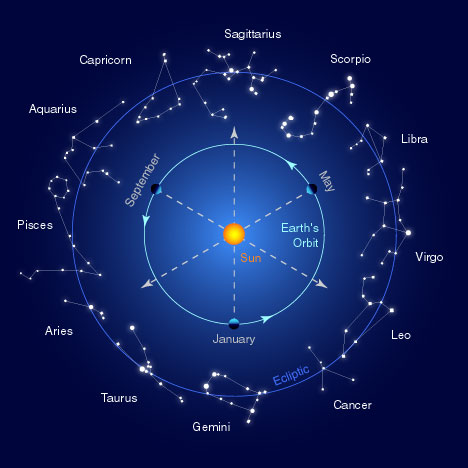
If you look at the sky during the Summer solstice (this is difficult to do during the summer due to the midnight sun in the far North), when the tip of Sagittarius’ arrow rises above the horizon, it is at that moment that the constellation Gemini starts to descend into the underworld at the same time the sun sets and the night begins. We can look to the Vedic and Greek myths and astrology (which have been well preserved) to get some ideas about which constellations are consubstantial with the Norse characters acting in this myth. Since Gemini is identified with the Dioscouri, Castor and Pollux, Baldur and Höðr, the Norse “embattling brothers”, should be identified with it as well. Sagittarius can be identified with Loki since he shares many aspects of similarity with the Vedic Dadhyanch also known as Angira.
The Vedic Horse sacrifice is a ritual mating (maithuna) or “divine marriage” that is quite old. It was a ritual used to guarantee the good fortune of the king and his kingdom. It has been present in India since very ancient times as evidenced by the ancient philosophical treatise on Sankhya doctrines, the Sankhyayana Shrauta Sutra (17:6:2). It states that ritual maithuna "is an ancient ritual, already fallen in disuse". Another sutra, the Shatapatha Brahmana (11:6:2-10), says that the maithuna is done for the sacrifice in honor of Agni, the Hindu Fire-god, and is called the agnihotra.
In this ritual, the participant throws balls made of butter into the fire, where the butter is representative of what were formerly sacrificial victims. The sacrifice is done both at dawn and at sunset. The fire of Agni represents the Sun but more exactly, the Fallen Sun that inflames the earth at the world's end or the end of the day.
 |
This sacrifice was also done by the Romans and their version was known as the “October Horse” and there is evidence showing it was practiced in Ireland in the twelfth century in Ulster province where a white mare was sacrificed for the inauguration of a new king. One of the new queens would lie down next to the sacrificed mare in a symbolic sexual union and some authors have even suggested that the new king would have intercourse with the horse!
In the Vedic myths associated with this sacrifice, another version of Agni is named Angiras. The meaning of his name can be translated in a number of different ways: the "anointed one" or the "fiery one" (Agni). The name Angiras is also associated with Dadhyanch ("sprinkler of curds"), the Hindu flying horse.
Dadhyanch is also connected with Indra and his theft of the intoxicant Soma where he revealed the secret of Soma to the celestial physicians, the Asvins (the Vedic Baldur and Höðr), and was subsequently decapitated by Indra as punishment. The Asvins replaced Angiras’ head with a horse’s head and re-animated him. It is his decapitated head that is supposed to fall down to earth, and becomes the fiery mare that is kept at the bottom of the Ocean (the sun).
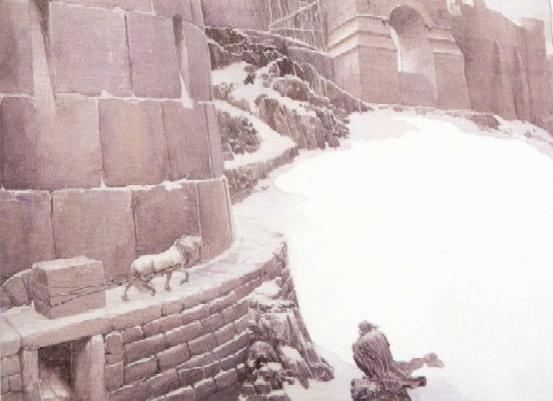
Loki is known for transforming into a mare in order to lure Svaðilfari away from the giant building the wall around Asgard in chapter 42 of Gylfaginning, and is the only god/giant to transform into a female horse in the Norse mythology.
Loki’s character seems akin to lightning, which would explain why he was so often found journeying with Thor (Thunder) and also why he would be associated with destructive fire since his father, Fárbauti, is the hurricane and his mother “Laufey” is a leafy island or tree-top where lightning would strike and produce destructive fire with their “mating.” (I will in a future post mention parallels with the Tibetan lightning dagger known as the Vajra and its’ function as a weapon of the gods).
R. Gordon Wasson demonstrated that many European cultures have beliefs that the red and white fairy tale mushroom, Amanita muscaria, can only come forth out of the ground after a storm if lightning fertilizes the ground (in reality it is the rain that makes it come out of the ground) and the Amanita only grows underneath certain tress – conifers, birches and oaks. Loki appears to be the same as this incarnation of Agni (Angiras) even though he is also the one to kill Agni (identified with Heimdal by Viktor Rydberg in UGM I no. 82) at the end of the world, Ragnarok, in a classical mythological paradox.
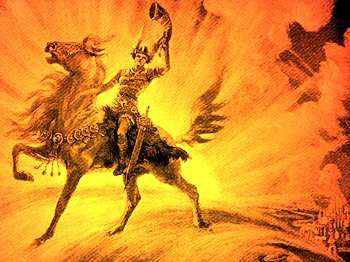
If we remember that almost all centaurs in Greek mythology are evil, it makes it a little easier to recognize Loki in the constellation Sagittarius. Many Greek authorities have identified Sagittarius with Chiron, the good centaur, who was the tutor of many mythological figures including Hercules, who taught his pupils the secrets of poisons and transformative substances while they lived in the wilderness with him (these “wild men” were usually archers who used poisoned arrows). Loki also seems to be like Chiron in this sense, since he seems to be a “procurer” of special items for the gods.
Loki goes out and gets the precious golden substances (the red Amanita mushroom dries to a golden hue and some varieties are golden) from the dwarves: the golden hair of Sif, the “mushroom-like” hammer for Thor and the golden bristled boar for Frey. In a multi-dimensional way, these golden items represent not only the golden mushroom used to make the “Mead of Poetry” but also the sun.
As Wasson discovered, lightning was thought to fertilize the ground and produce these mushrooms and it would mainly strike Thor’s symbolic hardwood tree – the Oak – which is the tree most struck by lightning. The Jotuns are the source of these mushrooms which were also known as the “Golden Apples of Eternal Youth” that Idunn was in charge of and Loki (the Jotun lad), brought this “fire” to the gods, just like Prometheus brought it to the humans in the Greek mythology.
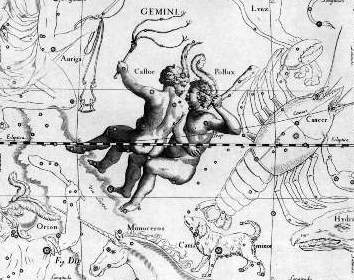 |
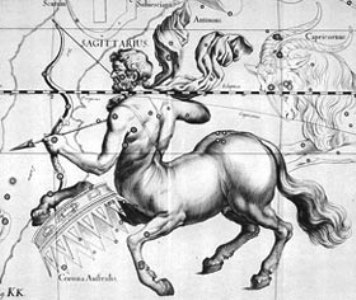 |
At sunset, on the summer solstice, the sun is in Gemini (which as one of the Dioscouri or “Twins” from the Greek astronomical tradition would be a representative of Balder) and just as it sets, with the glow of the sun on the horizon, Sagittarius, the Archer, raises his arrow over the horizon, with it just becoming visible. Sagittarius in this “scene” from the myth is Loki, who is the equivalent of the "horse sacrifice” given to the holy flame. The constellation following Gemini is Cancer, the “blind” constellation, so said because it is dim and difficult to see. I would propose that this has some association with the “blind” god Höðr, who is “standing” next to his brother, Baldur, when the arrow “kills” him, i.e., he goes beneath the horizon into the literal “underworld” as the sun sets in Gemini. It is Loki as Sagittarius, however, who is the real archer and the real cause of Balder’s death. The span of the sky covers half of the Zodiac constellations from Sagittarius to Gemini in this myth.
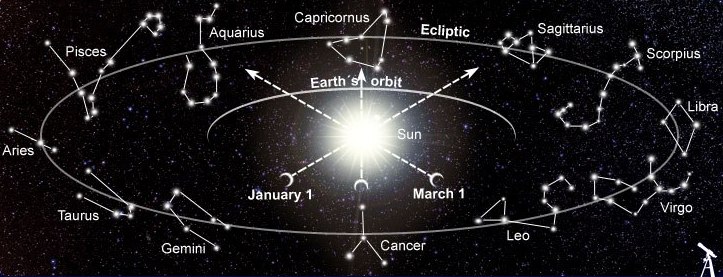
When he enters Hel, Balder becomes king of the dead and he rules the fields of bliss since this heavenly part of the Milky Way is full of the Mead of Poetry – which induces blissfulness. This part of Hel is not the region of the damned where Leikin, the spirit of disease and daughter of Loki rules (which could be identified with the evil constellations at the Southern portion of the Milky Way by Sagittarius and Scorpio). Nifelhel, or “misty Hel”, where she rules (according to Rydberg) is supposed to be the coldest region of the underworld where criminals and oath breakers are sent to in the afterlife for punishment. The stars of the milky way are the “mist.”
Some have hypothesized that Nidhogg, the dragon or wyrm, who lives there is Scorpio. Odin in Vafþrúðnismál says “To nine worlds came I, to Niflhel beneath, The home where dead men dwell” and in Baldrs draumar, Odin saddles Sleipnir and “rode he down to Niflhel deep” – always referring to Niflhel as being down, presumably meaning beneath the earth or below the horizon.
Balder is said to return to the upper world (above the horizon) after Ragnarok (which may be a representation of a total lunar eclipse with its “bloody” red moon), when Lif and Lifthrasir (like Bil & Hjuki on the moon) re-emerge from the protected space in Mimir’s grove (the moon) after the doom of the gods.